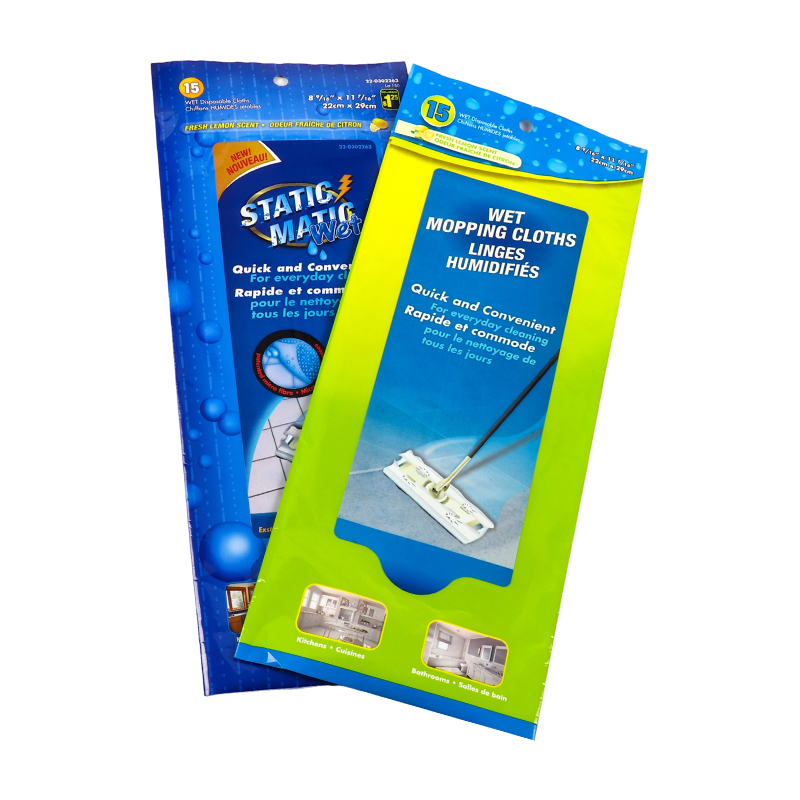2025-07-24
As consumer demand for convenient and reliable hygiene products continues to grow, packaging innovation is evolving to keep pace—particularly in the wet wipes sector. One notable advancement taking center stage is the Large Label Wet Wipes Composite Packaging Bag, a robust and user-friendly solution that combines visual appeal with practical functionality.
Engineered to maintain product integrity and enhance usability, this packaging format is increasingly favored by brands in personal care, healthcare, and household segments. Its construction, featuring advanced composite materials and an oversized resealable label, addresses long-standing challenges around moisture retention, convenience, and shelf impact.
The Evolution of Wet Wipes Packaging
Wet wipes have become an essential part of daily routines, whether in baby care, cosmetics, surface sanitization, or industrial cleaning. Yet the efficacy of these wipes depends heavily on the packaging that houses them. Traditional tubs and rigid containers, though effective in protecting the product, often fall short in sustainability, portability, and branding flexibility.
The rise of flexible packaging formats—such as composite pouches with resealable labels—has shifted the landscape. The Large Label Composite Bag, in particular, is gaining traction for its blend of performance and presentation. It offers a more substantial sealing surface compared to thin-label counterparts, reinforcing moisture lock-in while allowing larger, easier-to-use access flaps.
Key Features That Set It Apart
Barrier Protection
Built with a multi-layer composite film—often composed of PET/AL/PE or similar high-barrier laminates—this packaging offers resistance to moisture, oxygen, and external contaminants. This barrier ensures that wipes remain fresh and saturated for extended periods, even after multiple openings.
Enhanced User Experience
The larger resealable label is not just a visual element—it enhances ergonomics. Users benefit from a wider opening area, making it easier to retrieve wipes without contamination or hassle. This is particularly useful for single-handed operation in fast-paced or hygienically sensitive environments.

Visual and Branding Flexibility
The expansive label also serves as prime real estate for brand messaging, promotional content, or product instructions. With high-definition printing technologies, brands can capitalize on bold graphics, tactile finishes, or QR code integrations to deepen consumer engagement.
Robustness and Shelf Stability
Unlike thinner flexible packages that may lose form or collapse during usage, large-label composite bags maintain a semi-structured form thanks to their thicker laminate layers and reinforced sealing. This contributes to a tidy, stable presentation on store shelves or in home storage.
Why the Market Is Taking Notice
The demand for large-label composite packaging is driven by multiple intersecting trends:
Consumer Convenience: End-users are prioritizing ease of use, portability, and the ability to reseal wipes effectively. Larger labels simplify access and reduce the chance of label wear or adhesive fatigue.
Brand Differentiation: With fierce competition in the wipes category, packaging can be a key differentiator. The large label area gives designers more creative freedom for marketing and product storytelling.
Sustainability Pressure: Although composite materials can be more complex to recycle, advances in mono-material composite films are closing this gap. Additionally, the reduced plastic footprint compared to rigid lids aligns better with environmental goals.
Operational Efficiency: For manufacturers, these bags are compatible with high-speed filling and sealing equipment. They can also be customized for various wipe sizes and counts, offering scalability without compromising quality.
Industry Applications
Large Label Composite Packaging is being adopted across a wide spectrum of use cases:
Baby and Personal Care Wipes: Trusted by parents for its reseal strength and ease of use.
Disinfecting and Cleaning Wipes: Ideal for healthcare or janitorial services where hygiene and reliability are paramount.
Beauty and Skincare: Offers a look and feel to appeal to health-conscious and brand-savvy consumers.
Industrial and Automotive Wipes: Durable enough to withstand harsh environments and repeated usage.
Innovation Ahead
Material science and design innovation continue to drive improvements in this packaging segment. Manufacturers are now exploring options such as bio-based films, compostable adhesives, and smart labels that can monitor freshness or usage. These developments aim to push the boundaries of functionality while aligning with global sustainability goals.